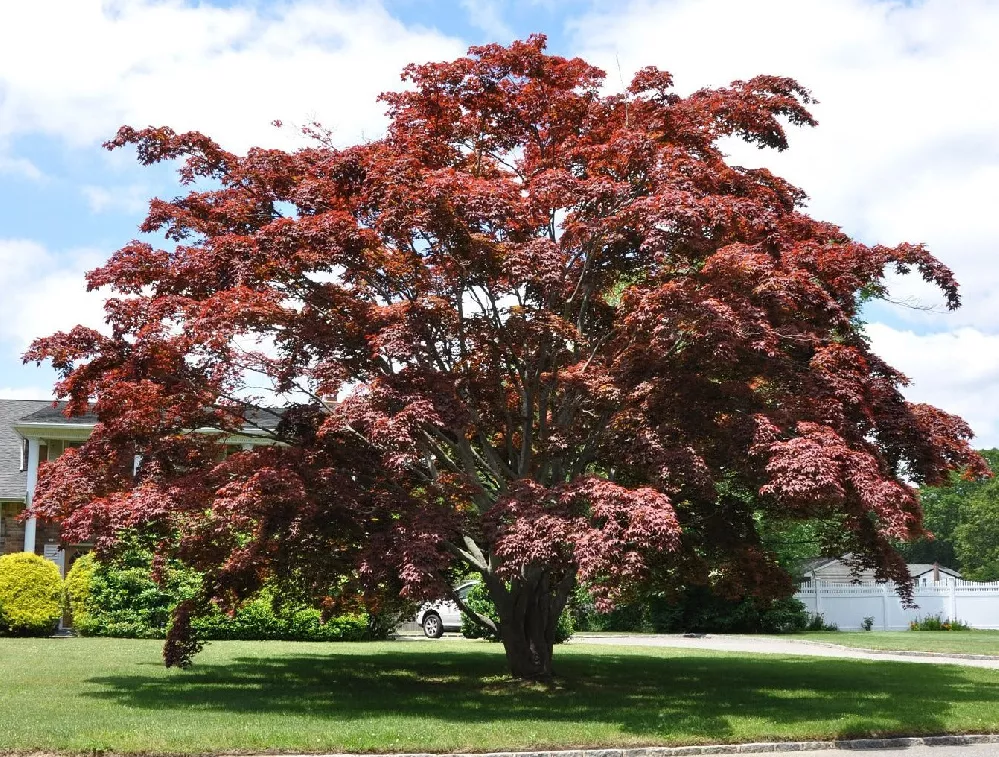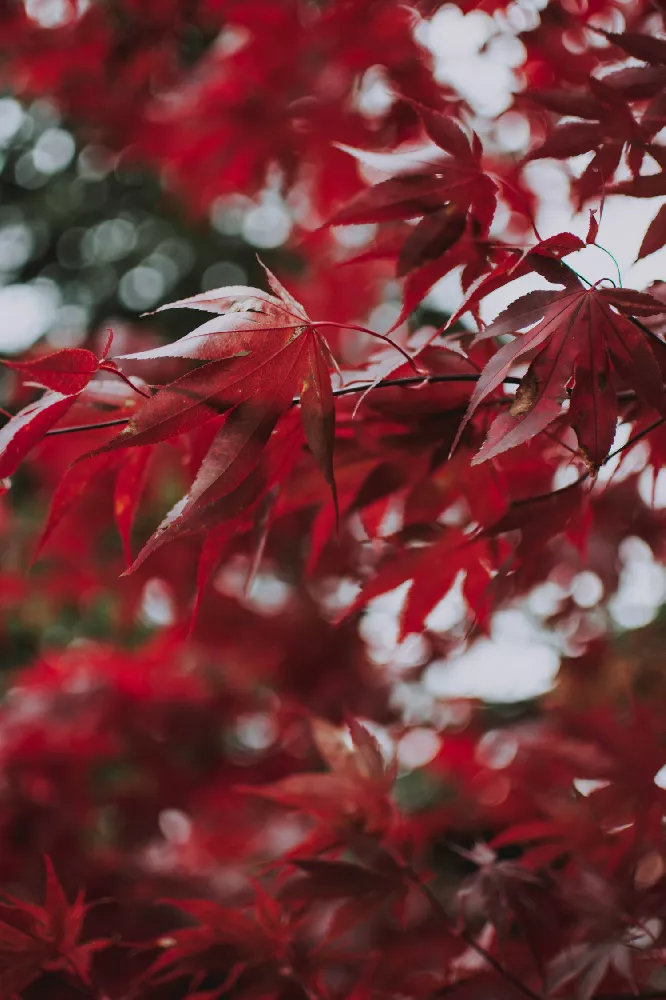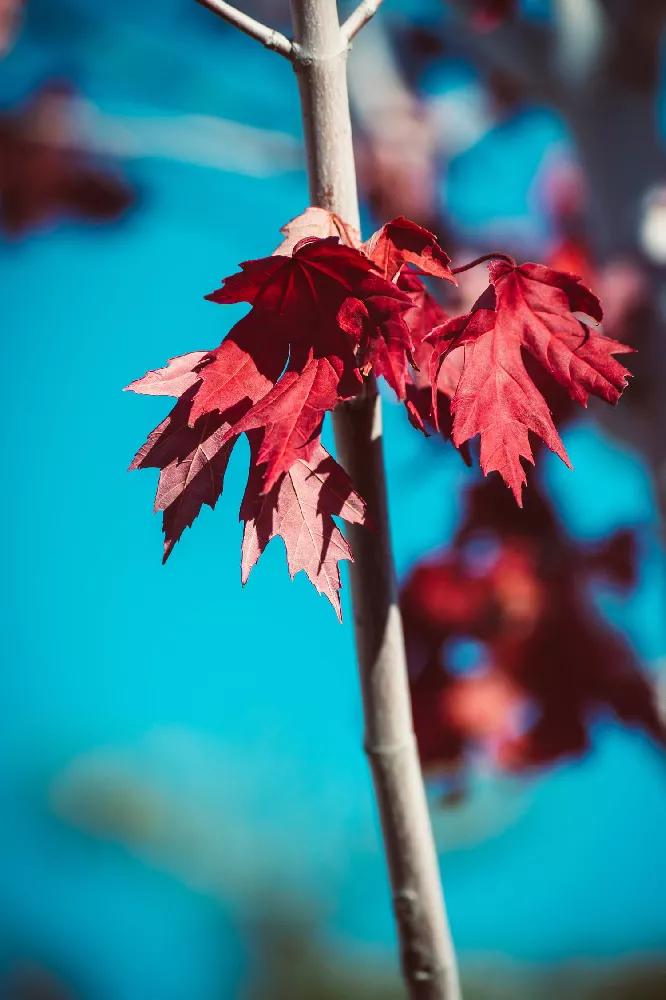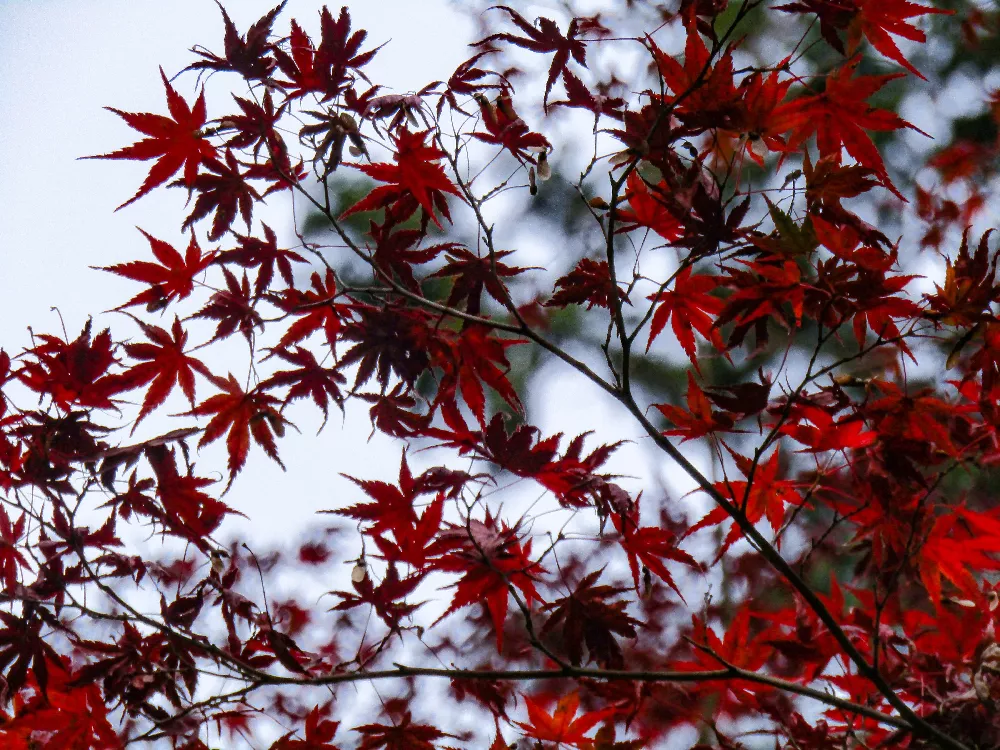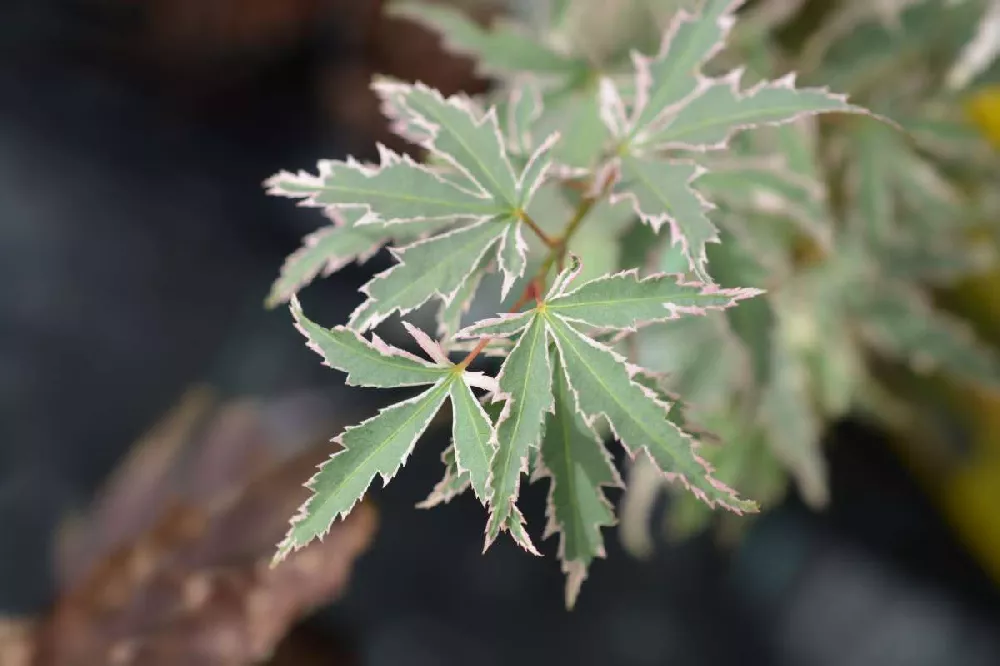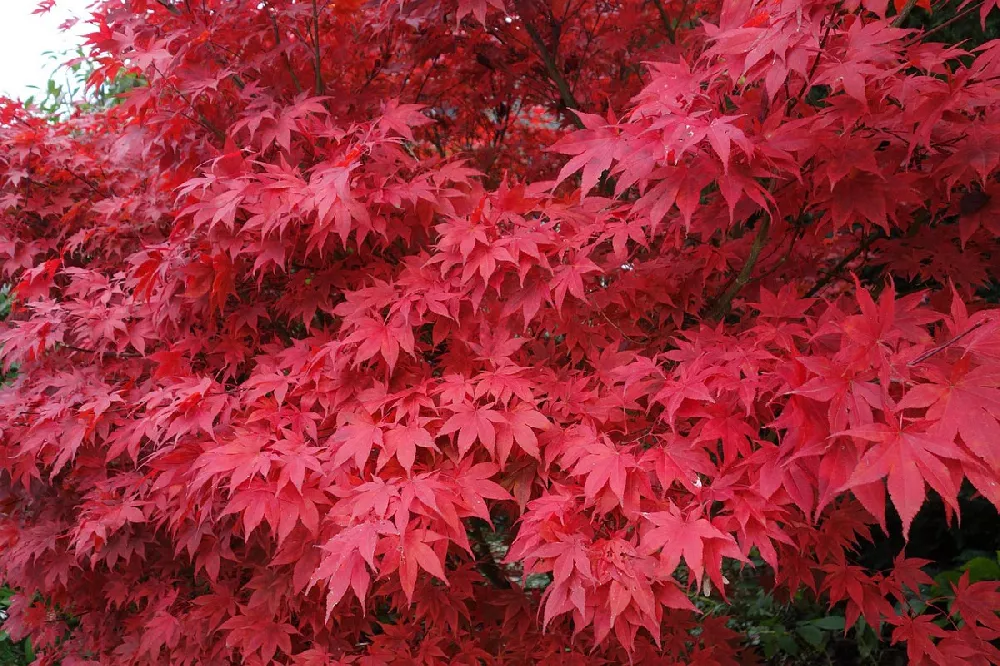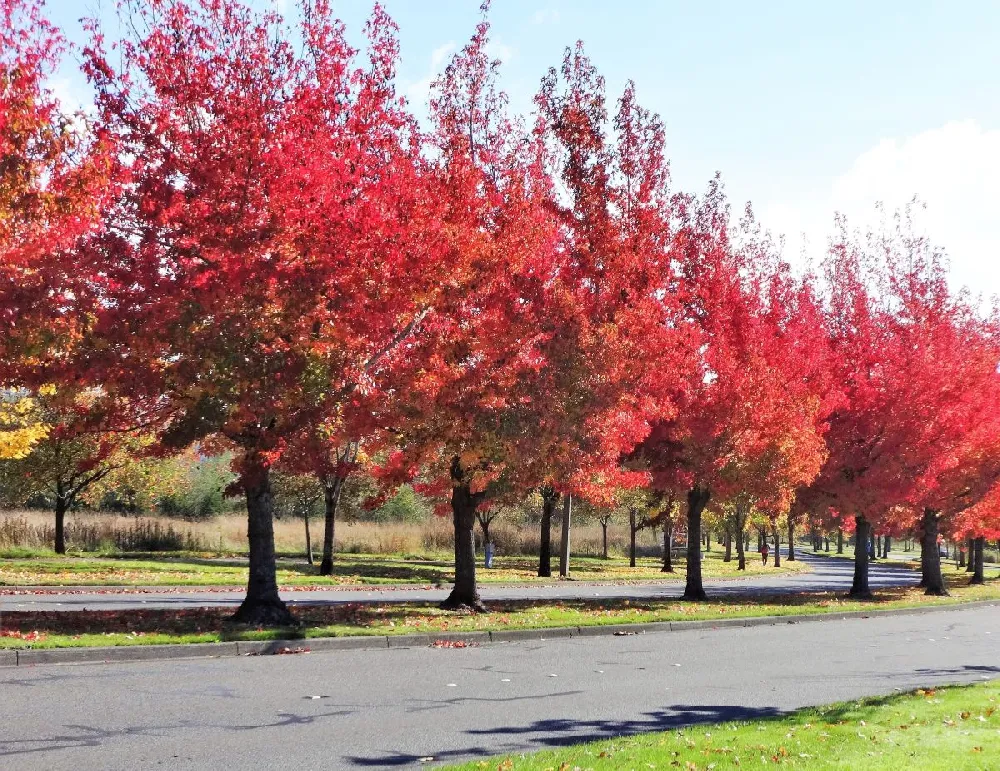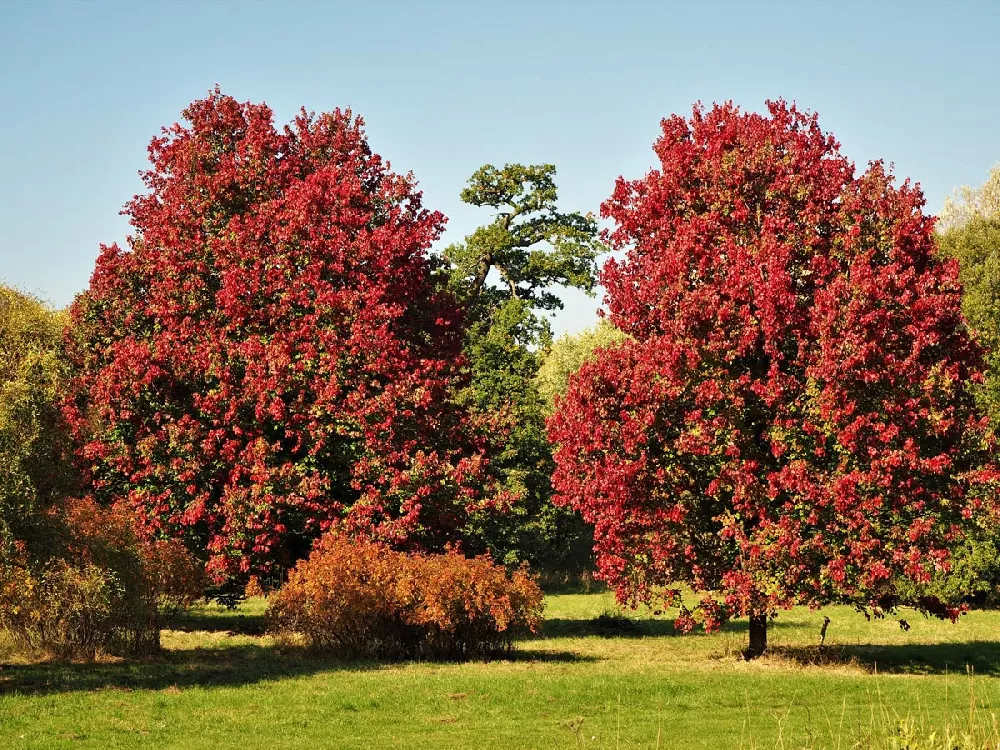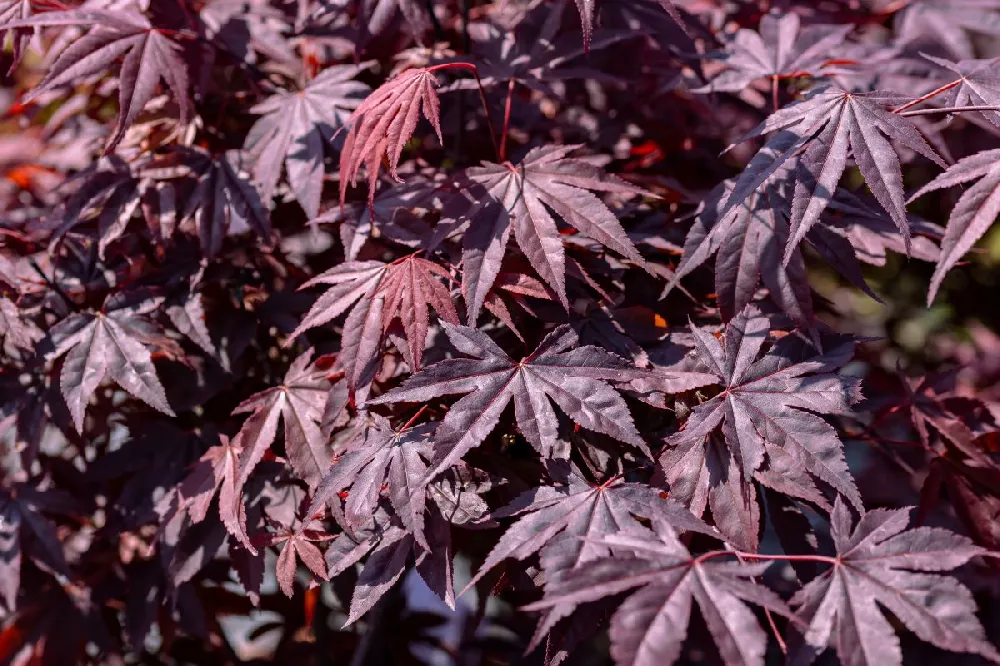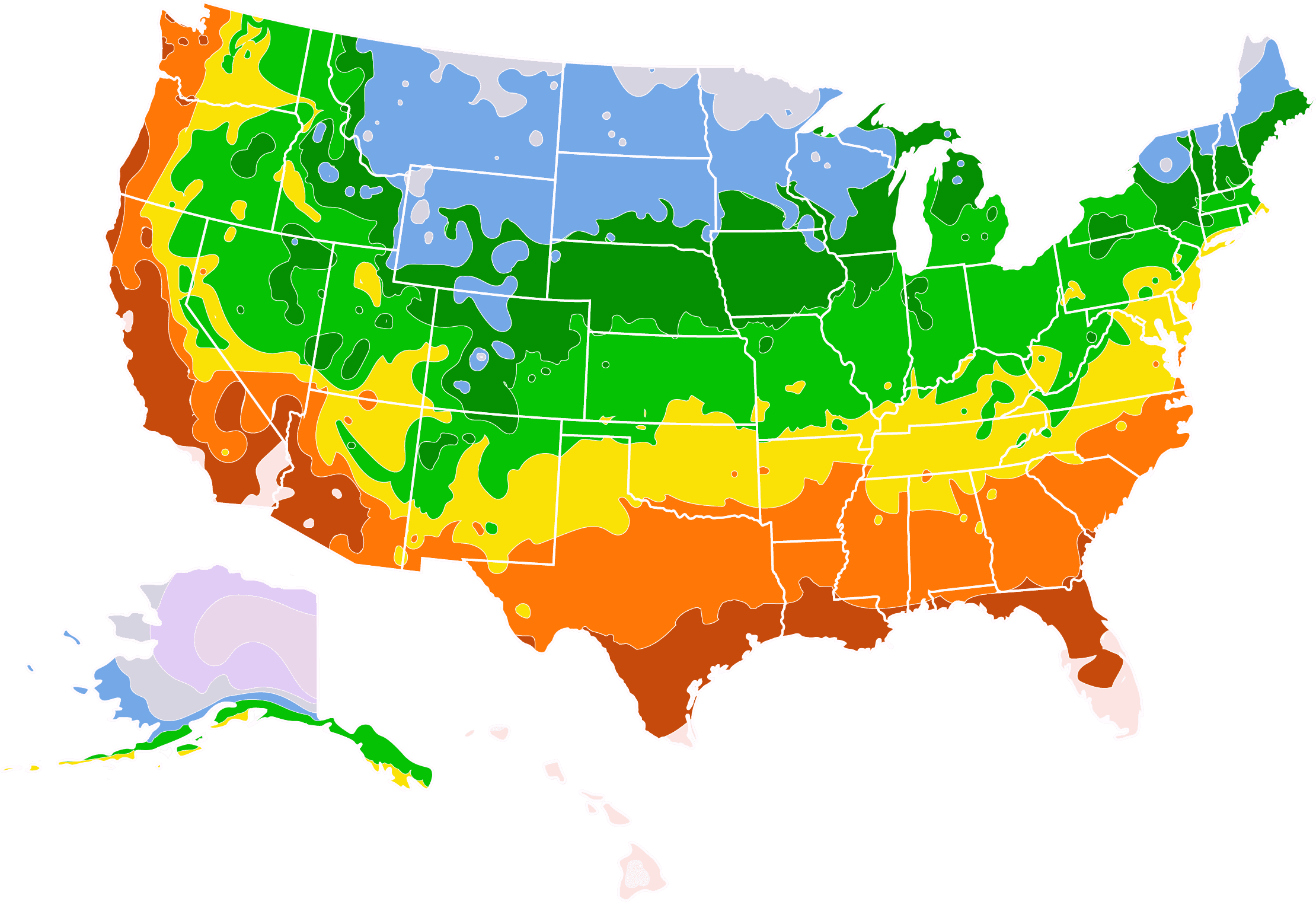- Home >
- Maple Trees >
- American Red Maple Trees
American Red Maple Trees for Sale
- Ships in 1-2 days
- 1-Year Warranty Eligible
- Pots or accessories are not included unless specified in the product options.
Shipping Details:
Once your order is shipped, you’ll receive an email with a tracking number and estimated delivery date. Most orders ship immediately, but some items are seasonal and may only ship in spring or fall. These products are noted on the website.
The American red maple (Acer rubrum) is one of the most beautiful fall foliage trees. Its multi-seasonal interest makes it a highly desirable tree to include in a landscape. The dense green foliage provides abundant shade in the summer. During fall, the leaves transition into a magnificently intense red color. American red maple highlights include:
- Requires very little care and is cold/frost hardy
- Buds appear in late fall/early winter
- Native to the eastern half of the U.S.
Plant Care
Sunlight

American red maple trees grow best when they receive at least six hours of direct sunlight per day.
Watering
These trees prefer moist soil. Routine watering may be necessary, especially if you live in a warm or dry area.
Fertilizing

Fertilizer with an NPK ratio of 20-5-5 is recommended for American red maple trees.
Planting and Care
Planting instructions
American red maple trees are very sensitive to salt and should never be planted near a street or area that is salted during the winter. This tree should be planted in the fall. When planting, select an area that gets full sun, partial shade, and is well-drained (e.g. sandy and clay soil.) The roots tend to break through the surface of the ground, so avoid planting near structures, sidewalks, and driveways. Dig a hole two feet wider than the root ball and deep enough to adequately cover the rootball. Cover with three inches of mulch.
Watering and nutrients
Water this tree slowly as needed. The tree prefers moist soil, so if you live in a warm and arid climate, routine watering may be necessary. Maintaining a thick layer of mulch around the trunk will help retain moisture — just make sure you don’t cover up the root collar, as this can lead to disease and possibly death. Pulling the soil and mulch away from the base of your tree will allow the root collar to continue absorbing oxygen.
Fertilize every other year in early spring with a slow-release general fertilizer. Soil pH should be within a range of 4.5 to 6.5. Amending the soil can be done by adding compost and sulfur.
Pollination
American red maples are one of the first trees to bloom each year. A tree will either be male or female. You can easily identify a male tree because the flowers are yellowish-pink. Female trees put forth dark pink flowers. Once a tree blooms, the flowers last for one to two weeks. During this time, various bees, small wasps, and flies visit the flowers. The pollinators and the wind carry pollen between the trees. Once a tree has been fertilized, seeds resembling helicopters develop and whirl down to the ground.
Pruning
Pruning is usually required. However, if there are dead, broken, or hanging branches (touching the ground, structure, or power line), they will need to be trimmed. You should only prune in early fall to avoid damaging the tree. Be sure to use sharp, disinfected shears. Aggressive pruning should be reserved for mature trees (young trees cannot tolerate excessive pruning). Trim sprouts along the trunk near the ground. When trimming branches, cut as close to the trunk as possible.
Pests, diseases, and animals
Aphids, borers, and scale insects can be problematic. Using neem oil to fend off bugs should suffice. Fungal infections such as canker, anthracnose, tar spot, and leaf spot are common in American red maples. Applying a fungicide such as Bonide’s Copper Fungicide works well. Verticillium wilt is also a known enemy, and unfortunately, there is no treatment. Preventing disease is the first defense to avoid problems.
American red maples are toxic for horses only. Ingesting the leaves or branches causes the hemoglobin to oxidize.
FAQs
Where in the U.S. do American maple trees grow best?
These trees are native to the eastern portion of the U.S. and as far north as Quebec (Canada). They grow wild all over New England and are one of the most vibrantly colored fall-foliage trees. Their native habitat includes sloping, rocky, dry hillsides and mountainsides where they tolerate wet to dry soils. It is not unusual to find them growing in swamps and bogs. They do not seem to have a preference for any particular region within the east.
Why is my American red maple tree yellow?
There is quite a bit of confusion about how a “red” maple tree can end up with yellow foliage. The leaves contain chlorophyll, which is green during the spring and summer. Even though the green chlorophyll is dominant, there are separate red cells present that are not yet visible. As the tree goes dormant in fall, the green chlorophyll slowly fades while the red cells begin to dominate. There is just enough green left that combines with the red resulting in yellow or orange foliage.
How long do American red maples live?
Under the right conditions, this tree can live as long as 200 years. The average lifespan is 80 to 200 years. Good cultural practices prolong the life of a tree. The environment plays a significant role in longevity. For example, trees growing in urban areas can suffer from pollution and issues with the quality of water. Trees in locations near diseased plants or soils may have shorter lives. Currently, the oldest specimen alive today is located in a public park in Eindhoven, Netherlands. It is 146 years old.
Does this tree produce sap for syrup?
The American red maple does produce sap that can be used to make syrup. It is not as sweet tasting as other maples. Sugar maples are primarily used for syrup-making because of their high sugar content. Black Maples produce sap that is just as sweet. American red maples come in third place as a preferred maple by syrup-makers. Tapping is reserved for trees with at least 12-inch trunks—the bigger the tree, the more it can be tapped.
How fast do American red maple trees grow?
These trees are fast growers. Young American red maples can grow up to three feet each year. It can reach as much as 20 feet in five years. It is not considered “mature” until it is 70 years old, which at around that time, its growth begins to slow. It is rare for one of these trees to grow taller than 70 feet. However, an American red maple on the banks of Belle River in China Township, Michigan, is a whopping 176 feet tall.
Compare Similar Products
Customer Reviews
 Spots
SpotsI have a lot of spots on the leaves, but they are doing fine so far! Even in the HOT summer we are having!
 Tree
TreeGreat nice package, easy to plant.
 Babies but look healthy!
Babies but look healthy!Everything seemed very good. They are little, but seem healthy. Shipping was great.
 American Red Maple
American Red MapleOverall, not too bad. The leaves were mostly brown as stated in the instructions. After two weeks, they are still brown and no new growth has appeared. Still definitely satisfied with the products I purchased from this company.
